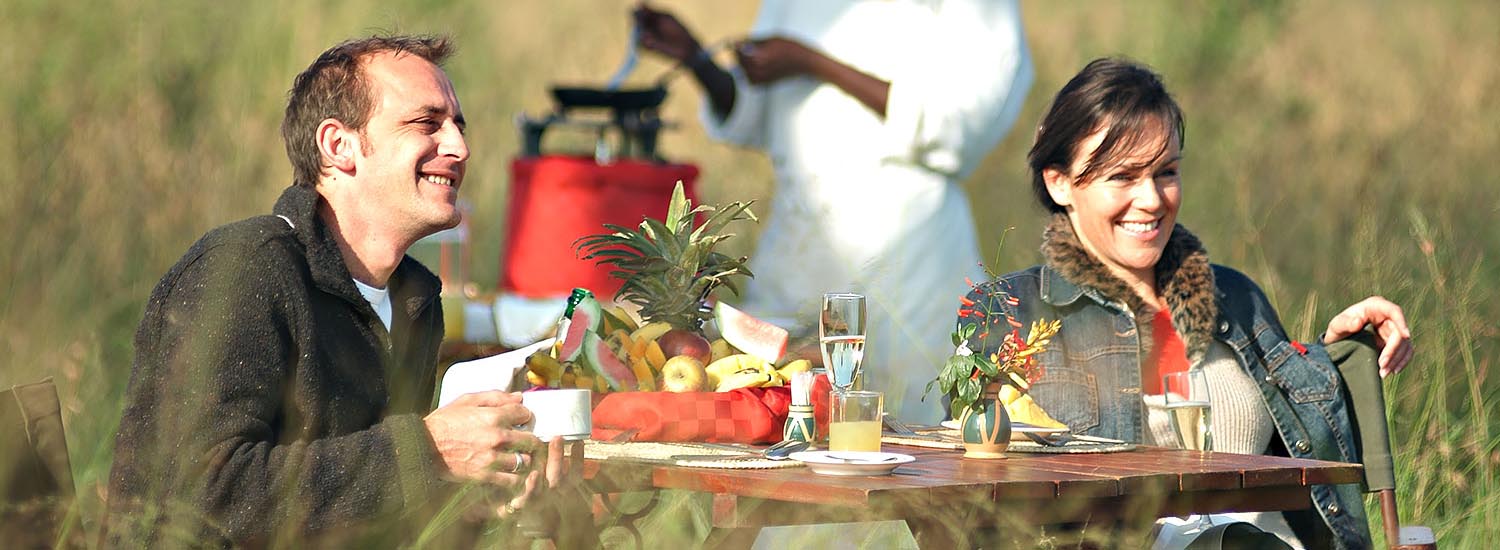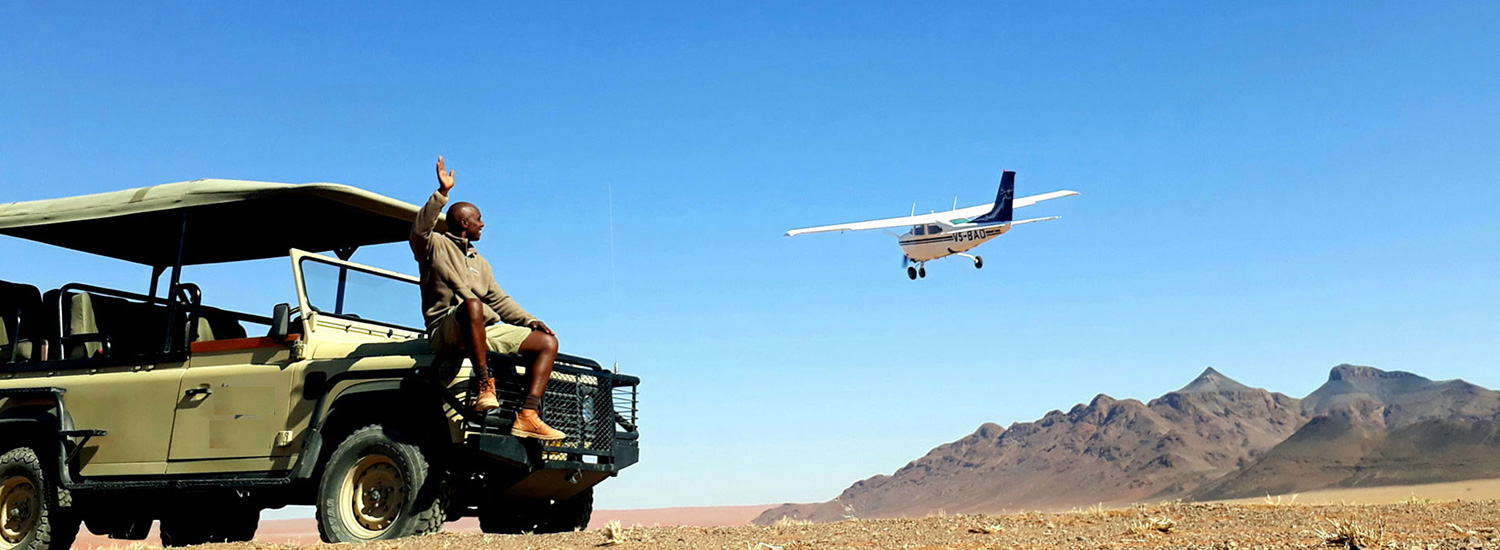
Tsavo West National Park is located in the Coast Province of Kenya. The park covers an area of 9,065 square kilometres. The A109 road Nairobi-Mombasa and a railway divides the park into east and west. The western part is a more popular destination on account of its magnificent scenery, Mzima Springs, rich and varied wildlife, good road system, rhino reserve, rock climbing potential and guided walks along the Tsavo River.
The park is operated by Kenya Wildlife Service. Although a few Early Stone Age and Middle Stone Age archaeological sites are recorded from ground surface finds in Tsavo West National Park, there is much evidence for thriving Late Stone Age economy from 6,000 to 1,300 years ago. Research has shown that Late Stone Age archaeological sites are found close to the Galana River in high numbers. The inhabitants of these sites hunted wild animals, fished and kept domesticated animals. Because of the sparse availability of water away from the Galana River, human settlement in Tsavo West National Park is focused on the riparian areas and in rockshelters as one moves west. Swahili merchants traded with the inhabitants of Tsavo for ivory, catskins, and probably slaves as early as 700 AD (and probably earlier).
There is no evidence for direct Swahili “colonization” of Tsavo. Instead, trade was probably accomplished by moving goods to and from the Swahili Coast via extended kin-networks. Trade goods such as cowry shells and beads have been recovered from archaeological sites dating to the early Swahili period. Nineteenth-century British and German explorers document people we now refer to as Orma and Waata during their travels through the “nyika,” and generally viewed them as hostile toward their interests. Beginning in the late nineteenth/early twentieth century, the British began a concerted effort to colonize the interior of Kenya and built a railroad through Tsavo in 1898.
Legend has it that “man-eating lions” terrorized the construction crews, however modern scholarship attributes the Waata for kidnapping and killing Indian and British laborers in an attempt to stop the unwanted intrusion into their territory. Inevitably, the British colonial authority bolstered security for the construction effort and the railroad was built. Tsavo remained the homeland for Orma and Maasai pastoralists and Waata hunter-gatherers until 1948, when it was gazetted a national park. At that time, the indigenous populations were relocated to Voi and Mtito Andei as well as other locations within the nearby Taita Hills.
Following Kenyan independence in 1963, hunting was banned in the park and management of Tsavo was turned over to the authority that eventually became the Kenya Wildlife Service. Tsavo currently attracts photo-tourists from all over the world interested in experiencing the vastness of the wilderness and incredible terrain.
Tsavo East National Park is one of the oldest and largest parks in Kenya at 11,747 square kilometers. Opened in April of 1948, it is located near the village of Voi in the Taita District of Coast Province. The park is divided into east and west sections by the A109 road and a railway. Named for the Tsavo River, which flows west to east through the national park, it borders the Chyulu Hills National Park, and the Mkomazi Game Reserve in Tanzania.
The park can be accessed by three main gates, from Voi through the Manyani gate, from Mombasa through the Bachuma gate or from Malindi through the Sala gate. There are also several airstrips in the park that allow chartered light planes. Inside the park, the Athi and Tsavo rivers converge to form the Galana River. Most of the park consists of semi-arid grasslands and savanna. It is considered one of the world’s biodiversity strongholds, and its popularity is mostly due to the vast amounts of diverse wildlife that can be seen. The park also offers camping and several geographical points of interest. The slightly larger Tsavo East is generally flat, with dry plains across which the Galana River flows. Other features include the Yatta Plateau and Lugards Falls.
Wildlife in Tsavo East includes black rhinos and hirola antelopes. Tsavo West National Park is more mountainous and wetter than its counterpart, with swamps, Lake Jipe and the Mzima Springs. It is known for birdlife and for its large mammals. It is also home to a black rhino sanctuary. Although a few Early Stone Age and Middle Stone Age archaeological sites are recorded from ground surface finds in Tsavo, there is much evidence for thriving Late Stone Age economy from 6,000 to 1,300 years ago. Research has shown that Late Stone Age archaeological sites are found close to the Galana River in high numbers. The inhabitants of these sites hunted wild animals, fished and kept domesticated animals. Because of the sparse availability of water away from the Galana River, human settlement in Tsavo focused on the riparian areas and in rockshelters as one moves west. Swahili merchants traded with the inhabitants of Tsavo for ivory, catskins, and probably slaves as early as 700 AD (and probably earlier). There is no evidence for direct Swahili “colonization” of Tsavo.
Instead, trade was probably accomplished by moving goods to and from the Swahili Coast via extended kin-networks. Trade goods such as cowry shells and beads have been recovered from archaeological sites dating to the early Swahili period. Nineteenth-century British and German explorers document people we now refer to as Orma and Waata during their travels through the “nyika,” and generally viewed them as hostile toward their interests. Beginning in the late nineteenth/early twentieth century, the British began a concerted effort to colonize the interior of Kenya and built a railroad through Tsavo in 1898. Legend has it that “man-eating lions” terrorized the construction crews, however modern scholarship attributes the Waata for kidnapping and killing Indian and British laborers in an attempt to stop the unwanted intrusion into their territory.
Inevitably, the British colonial authority bolstered security for the construction effort and the railroad was built. Tsavo remained the homeland for Orma and Maasai pastoralists and Waata hunter-gatherers until 1948, when it was gazetted a national park. At that time, the indigenous populations were relocated to Voi and Mtito Andei as well as other locations within the nearby Taita Hills. Following Kenyan independence in 1963, hunting was banned in the park and management of Tsavo was turned over to the the authority that eventually became the Kenya Wildlife Service. Tsavo currently attracts photo-tourists from all over the world interested in experiencing the vastness of the wilderness and incredible terrain. Major Attraction The Mudanda Rock is a 1.6 km inselberg of stratified rock that acts as a water catchment that supplies a natural dam below.
It offers an excellent vantage point for the hundreds of elephants and other wildlife that come to drink during the dry season. The Yatta Plateau, the world’s longest lava flow, runs along the western boundary of the park above the Athi river. Its 290 km length was formed by lava from Ol Doinyo Sabuk Mountain. Lugard Falls, named after Frederick Lugard, is actually a series of rapids on the Galana river. Aruba Dam was built in 1952 across the Voi river. The reservoir created by the dam attracts many animals and water birds. Tsavo East National Park is one of the world’s largest game reserves, providing undeveloped wilderness homes to vast numbers of animals. A comprehensive list of the animal types found in Tsavo East Park includes the aardwolf, yellow baboon, bat, cape buffalo, bushbaby, bushbuck, caracal, African wildcat, cheetah, African Civet, dik-dik, African hunting dog, African dormouse, Blue Duiker, bush duiker, red duiker, eland, African elephant, bat-eared fox, greater galago, gazelle, large-spotted genet, small-spotted genet, gerenuk, giraffe, African hare, springhare, Coke’s hartebeest, hunter hartebeest, East African hedgehog, spotted hyena, striped hyena, rock hyrax, tree hyrax, impala, black-backed jackal, side-striped jackal, klipspringer, Lesser Kudu, leopard, lion, banded mongoose, dwarf mongoose, large grey mongoose, marsh mongoose, slender mongoose, white-tailed mongoose, black faced vervet monkey, Sykes’, monkey, fringe-eared oryx, clawless otter, ground pangolin, crested porcupine, cane rat, giant rat, naked mole rat, ratel, bohor reedbuck, black rhinoceros, serval, spectacled elephant shrew, bush squirrel, East African red squirrel, striped ground squirrel, unstriped ground squirrel, suni, warthog, waterbuck, common zebra, and Grevy’s zebra. Birds.
Over 500 bird species have been recorded in the area, including ostriches, kestrels, buzzards, starlings, weaver birds, kingfishers, hornbills, secretary birds, and herons.
Booking is easy! Simply provide the necessary details. Our team will guide you through the booking process and answer any questions you have.
Have more questions? Feel free to reach out to our friendly customer support team. We're here to make your tour experience smooth and memorable!
We understand that circumstances can change. Our cancellation and change policies vary based on the tour and destination. Please review the specific terms in our booking policy or contact our team for assistance.
Our tour packages typically include* accommodations, transportation, guided tours, and specified activities. We provide transparent details about inclusions and exclusions to help you make informed decisions.
*Individual tour details may change.








